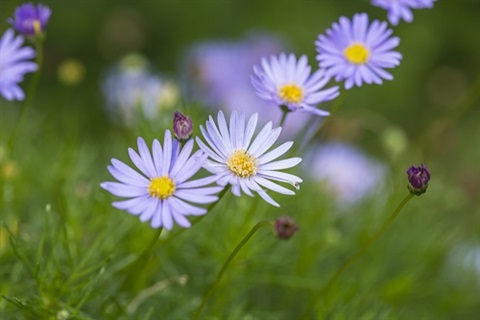Caring for native plants

Benefits of native plants
Many of Nillumbik’s local native plant species make ideal garden plants as they often require little or no maintenance, have low water requirements and provide habitat for many of the native animals that inhabit the local area.
Dense prickly shrubs and mature trees, such as Acacia verticillata (Prickly Moses) and Eucalyptus melliodora (Yellow Box), provide homes for a large range of insect, bird and mammal species.
Local native plants also provide spectacular displays of showy flowers throughout the year. If you plan your garden carefully and select a wide variety of species, you can create a mass of brilliant colours throughout each of the seasons.
It is important when using indigenous plants to select those that occur naturally within the Shire (plants that are of local provenance). Many nurseries carry species of plants that are not grown from locally collected seeds or cuttings. These plants may actually endanger the local genetic stock through interbreeding.
Planting tips
Make sure you have chosen a position suited to the needs of the plant, for example full sun, moist soils etc. Dig a hole a little deeper than and twice as wide as the pot, in fill slightly to allow the roots to start growing through the soil.
Carefully remove the plant from the pot, place it in the centre of the planting hole. In fill with the soil (you may like to add compost to the soil). Ensure the top of the potting mix is level with surrounding soil and press it down gently. Water in well ensuring the water goes beyond the roots. You may need to stake the plant for protection.
The first 12 months
Keep an eye on your plants. They may need a good soaking once a week in dry weather. Deep water every so often is much better than a light watering daily and will promote a stronger root system.
Mulching
Mulch to a depth of 7.5 to 10cm. This decreases water evaporation from the soil and encourages worms and beetles in the soil, which keep it aerated and adds nutrients. It will also help reduce the growth of weeds. There are many types of mulch.
When you apply mulch it is best to do it after a rainy day when the soil is still damp. This will help keep the soil damp for a longer period. Do not place the mulch up against the plant stem, leave a ring around the stem clear of mulch. Top up the mulch every few years as it breaks down into the soil.
Fertilising
Generally no. If you want to use a little fertiliser use one specifically for native plants, for example Osmocote for natives or a very small amount of Dynamic Lifter or similar. Native and indigenous plants are adapted to survive in low nutrient conditions.
Staking
As a general rule do not stake local native plants. If you are planting in a windy area and need to stake the plants, use 3 stakes in a triangle around the plant (not too close to the stem/truck) and put twine or hay bale around the stakes so the plant is supported but not actually tied up.
The plant will then have some movement and grow a strong stem or trunk and be able to support itself. If you stake a plant very firmly and tie it so it cannot move it will not develop a strong trunk. When you remove the stake the plant may then fall or droop over.
Pesticides
Reduce the use of pesticides in your garden as much as possible. Many indigenous plans will attract ‘good insect’ which will help control the ‘not so good’ insects in your garden. This will also ensure that the insect are safe for frogs, birds, bats and wildlife to eat.
If you have pests it will be because there is a problem with the soil or the plant is growing in a situation where it is becoming stressed.
Pruning
Indigenous plants respond well to pruning. You should remove any dead-wood or diseased plant material. Prune at least 20mm of plant material each year.
Pruning mimics the grazing of kangaroos and wallabies. Prune after flowering by removing spent flowers, this encourages new growth and optimises flower production next season. Many indigenous plants can also be pruned to create a more formal garden.
Pruning hints:
- Always use sharp secateurs or pruning saw
- Always cut just above a node
- Regular tip pruning is preferred to infrequent hard pruning.